-
Small-scale nuclear fusion may be a new energy source
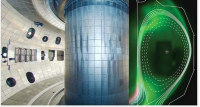
Nuclear fusion is a process whereby atomic nuclei melt together and release energy. Because of the low binding energy of the tiny atomic nuclei, energy can be released by combining two small nuclei with a heavier one. Fusion energy may soon be used in small-scale power stations. This means producing environmentally friendly heating and electricity at a low cost from fuel found in water. Both heating generators and generators for electricity could be developed within a few years, according to researchers.
-
-
Robots to pull wounded soldiers off battlefield
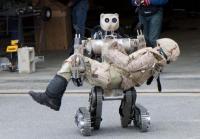
Most Americans have seen at least one war movie, where at some point a fresh-faced young private is hit with some shrapnel. From the ground, he calls out for the unit medic — another young guy, from another small town, whose quick reaction and skill just may save his life. In the near future, however, it may no longer be another soldier, who comes running to his side. Instead, it might be an Army-operated unmanned aerial or ground vehicle.
-
-
Climate change consensus extends beyond climate scientists
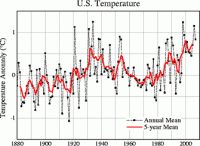
A survey of nearly 700 scientists from nonclimate disciplines shows that more than 90 percent believe that average global temperatures are higher than pre-1800s levels and that human activity has significantly contributed to the rise. The study is the first to show that consensus on human-caused climate change extends beyond climate scientists to the broader scientific community. Previous studies have shown that about 97 percent of actively publishing climate scientists believe in human-caused climate change, and a review of scientific literature on the existence of climate change indicated that about 97 percent of studies affirm climate change is happening.
-
-
Florida universities are national hub for hurricane mitigation research
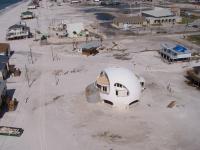
The National Science Foundation the other day announced grants to Florida International University and University of Florida totaling nearly $8 million that will position the state to become a national hub for research into making homes and businesses safer in hurricanes and tornadoes.
-
-
U.S. R&D increased in 2013, outpacing GDP
U.S. expenditures in research and development rose to $456.1 billion in 2013 — a $20.7 billion increase over the previous year, according to a new report from the National Science Foundation’s National Center for Science and Engineering Statistics. The business sector continues to be the largest performer of R&D in the United States, accounting for $322.5 billion, or 71 percent, of total national expenditures.
-
-
Helping replenish groundwater by flooding farms in the winter
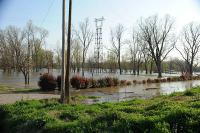
California is in chronic groundwater overdraft: There is more water being pumped from the ground than filtering in, and the state’s aquifers are shrinking as more growers pump groundwater to keep crops alive. But that fertile farmland may also provide the means for replenishing groundwater to benefit everyone in the drought-stricken state. Researchers at the University of California, Davis, are encouraged by early results from tests to see whether deliberately flooding farmland in winter can replenish aquifers without harming crops or affecting drinking water.
-
-
Testing radiation detection systems in harsh conditions
Researchers from five laboratories and a private company recently spent two days in blistering 100 degree heat testing radiation detection technologies amidst cargo containers. The fifteen researchers demonstrated the feasibility of using gamma-ray and neutron imaging detectors to identify radioactive materials using the Lawrence Livermore National Laboratory’s (LLNL) cargo container stack testbed.
-
-
Rising seas, bigger storms may greatly magnify U.S. East Coast floods
Over the past century, the East Coast has seen sea-level rise far above the 8-inch global average — up to a foot in much of the Mid-Atlantic and Northeast, including New York City. Many studies predict that future sea-level rise along the U.S. Atlantic and Gulf coasts will increase flooding. Others suggest that the human-caused warming driving this rise will also boost the intensity and frequency of big coastal storms. Up to now, though, these two hazards have been assessed mostly in isolation from each other. Now, a new study quantifies how they could interact to produce alarming spikes in the combined height and duration of flooding. It projects that coastal flooding could possibly shoot up several hundredfold by 2100, from the Northeast to Texas.
-
-
El Niño, La Niña will exacerbate coastal hazards across entire Pacific
The projected upsurge of severe El Niño and La Niña events will cause an increase in storm events leading to extreme coastal flooding and erosion in populated regions across the Pacific Ocean, according to a multi-agency study. The impact of these storms is not presently included in most studies on future coastal vulnerability, which look primarily at sea level rise. New research data, from forty-eight beaches across three continents and five countries bordering the Pacific Ocean, suggest the predicted increase will exacerbate coastal erosion irrespective of sea level rise affecting the region.
-
-
Seeing through the dark clearly
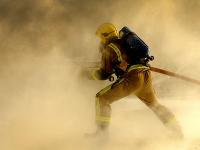
A new device, dubbed Thermal on Demand (TOD), allows firefighters to see everything in a heavily smoke-filled room, where the unassisted eye sees nothing but a pitch-black environment. TOD allows responders to see doors, furniture, light switches, debris on the floor, and victims lying on the floor. Looking through a periscopic lens, in front of a thermal camera, the wearer sees a detailed image of everything in the immediate vicinity.
-
-
Rather food versus fuel, think in terms of both food and fuel
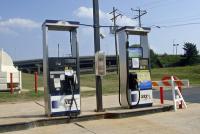
Whether you have taken a side or a backseat in the discussion, the “food versus fuel” debate affects us all. Some say growing more biofuel crops today will decrease greenhouse gas emissions, but will make it harder to produce food tomorrow, which has prevented the United States from maximizing the potential of environmentally beneficial biofuels. Scientists argue that farmers can sustainably, and affordably, meet humanity’s growing demand for food and fuel.
-
-
Snowpack of Sierra Nevada lowest in 500 years, worsening California water woes

Snowpack in California’s Sierra Nevada in 2015 was at the lowest level in the past 500 years, according to a new report. “Our study really points to the extreme character of the 2014-15 winter. This is not just unprecedented over 80 years — it’s unprecedented over 500 years,” said the lead author of the report. On 1 April of this year, California Governor Jerry Brown declared the first-ever mandatory water restrictions throughout the state while standing on dry ground at 6,800-foot elevation in the Sierra Nevada. The historical average snowpack on that site is more than five feet, according to the California Department of Water Resources.
-
-
Engineers design invisibility cloak for military drones
Inspired by the well-known Invisibility Cloak from Harry Potter, electrical engineers have created a new design for their cloaking device, using a Teflon substrate, studded with cylinders of ceramic, which is thinner than any prior development and does not alter the brightness of light around concealed objects. The Teflon has a low refractive index, while the ceramic’s refractive index is higher, which allows light to be dispersed through the sheet without any absorption. Compared to an invisibility cloak, this technology has not only the ability to conceal, but the ability to increase optical communication signal speed and to collect solar energy.
-
-
Insider threats, organizational rigidity pose challenges for U.S. national security: Study
U.S. national security faces rising challenges from insider threats and organizational rigidity, a Stanford professor says. A new study says that in the past five years, seemingly trustworthy U.S. military and intelligence insiders have been responsible for a number of national security incidents, including the WikiLeaks publications and the 2009 attack at Fort Hood in Texas that killed 13 and injured more than 30. The study’s author acknowledges the difficulties of learning lessons from tragedies like 9/11, the NASA space shuttle accidents, and the 2009 Fort Hood shooting. She notes that policymakers tend to attribute failure to people and policies. While seemingly hidden at times, the organizational roots of disaster are much more important than many think, she added.
-
-
NOAA: El Niño may accelerate nuisance flooding
Nuisance flooding causes public inconveniences such as frequent road closures, overwhelmed storm water systems, and compromised infrastructure. The extent of nuisance flooding depends on multiple factors, including topography and land cover. According to a new NOAA report issued yesterday, many mid-Atlantic and West Coast communities could see the highest number of nuisance flooding days on record through April due to higher sea levels and more frequent storm surge, compounded by the strengthening El Niño, which is likely to continue into the spring. These communities may experience a 33 to 125 percent increase in the number of nuisance flooding days, the report said.
-
More headlines
The long view
Encryption Breakthrough Lays Groundwork for Privacy-Preserving AI Models
In an era where data privacy concerns loom large, a new approach in artificial intelligence (AI) could reshape how sensitive information is processed. New AI framework enables secure neural network computation without sacrificing accuracy.
AI-Controlled Fighter Jets May Be Closer Than We Think — and Would Change the Face of Warfare
Could we be on the verge of an era where fighter jets take flight without pilots – and are controlled by artificial intelligence (AI)? US R Adm Michael Donnelly recently said that an upcoming combat jet could be the navy’s last one with a pilot in the cockpit.
The Potential Impact of Seabed Mining on Critical Mineral Supply Chains and Global Geopolitics
The potential emergence of a seabed mining industry has important ramifications for the diversification of critical mineral supply chains, revenues for developing nations with substantial terrestrial mining sectors, and global geopolitics.
AI and the Future of the U.S. Electric Grid
Despite its age, the U.S. electric grid remains one of the great workhorses of modern life. Whether it can maintain that performance over the next few years may determine how well the U.S. competes in an AI-driven world.
Using Liquid Air for Grid-Scale Energy Storage
New research finds liquid air energy storage could be the lowest-cost option for ensuring a continuous power supply on a future grid dominated by carbon-free but intermittent sources of electricity.
Enhanced Geothermal Systems: A Promising Source of Round-the-Clock Energy
With its capacity to provide 24/7 power, many are warming up to the prospect of geothermal energy. Scientists are currently working to advance human-made reservoirs in Earth’s deep subsurface to stimulate the activity that exists within natural geothermal systems.
